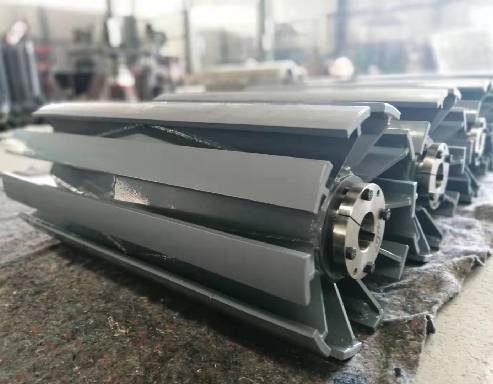 Afrikaans
Afrikaans  Albanian
Albanian  Amharic
Amharic  Arabic
Arabic  Armenian
Armenian  Azerbaijani
Azerbaijani  Basque
Basque  Belarusian
Belarusian  Bengali
Bengali  Bosnian
Bosnian  Bulgarian
Bulgarian  Catalan
Catalan  Cebuano
Cebuano  Corsican
Corsican  Croatian
Croatian  Czech
Czech  Danish
Danish  Dutch
Dutch  English
English  Esperanto
Esperanto  Estonian
Estonian  Finnish
Finnish  French
French  Frisian
Frisian  Galician
Galician  Georgian
Georgian  German
German  Greek
Greek  Gujarati
Gujarati  Haitian Creole
Haitian Creole  hausa
hausa  hawaiian
hawaiian  Hebrew
Hebrew  Hindi
Hindi  Miao
Miao  Hungarian
Hungarian  Icelandic
Icelandic  igbo
igbo  Indonesian
Indonesian  irish
irish  Italian
Italian  Japanese
Japanese  Javanese
Javanese  Kannada
Kannada  kazakh
kazakh  Khmer
Khmer  Rwandese
Rwandese  Korean
Korean  Kurdish
Kurdish  Kyrgyz
Kyrgyz  Lao
Lao  Latin
Latin  Latvian
Latvian  Lithuanian
Lithuanian  Luxembourgish
Luxembourgish  Macedonian
Macedonian  Malgashi
Malgashi  Malay
Malay  Malayalam
Malayalam  Maltese
Maltese  Maori
Maori  Marathi
Marathi  Mongolian
Mongolian  Myanmar
Myanmar  Nepali
Nepali  Norwegian
Norwegian  Norwegian
Norwegian  Occitan
Occitan  Pashto
Pashto  Persian
Persian  Polish
Polish  Portuguese
Portuguese  Punjabi
Punjabi  Romanian
Romanian  Russian
Russian  Samoan
Samoan  Scottish Gaelic
Scottish Gaelic  Serbian
Serbian  Sesotho
Sesotho  Shona
Shona  Sindhi
Sindhi  Sinhala
Sinhala  Slovak
Slovak  Slovenian
Slovenian  Somali
Somali  Spanish
Spanish  Sundanese
Sundanese  Swahili
Swahili  Swedish
Swedish  Tagalog
Tagalog  Tajik
Tajik  Tamil
Tamil  Tatar
Tatar  Telugu
Telugu  Thai
Thai  Turkish
Turkish  Turkmen
Turkmen  Ukrainian
Ukrainian  Urdu
Urdu  Uighur
Uighur  Uzbek
Uzbek  Vietnamese
Vietnamese  Welsh
Welsh  Bantu
Bantu  Yiddish
Yiddish  Yoruba
Yoruba  Zulu
Zulu conveyor frame parts
Understanding Conveyor Frame Parts Essential Components for Efficient Material Handling
Conveyor systems play a critical role in the modern industrial landscape, facilitating the movement of goods and materials across various operations, from manufacturing to warehousing. At the heart of these systems lies the conveyor frame, an essential part that supports the entire structure and ensures smooth operations. This article aims to delve into the various components of conveyor frame parts, their importance, and how they contribute to enhancing operational efficiency.
What is a Conveyor Frame?
A conveyor frame serves as the backbone of a conveyor system. It is designed to hold all the moving parts in place while providing stability and support during operation. Typically constructed from materials such as steel, aluminum, or plastic, the frame is engineered to endure the weight and stress of conveyor components and the materials they transport. The frame's design and construction significantly influence the overall performance, durability, and adaptability of the conveyor system.
Key Components of Conveyor Frame Parts
1. Uprights and Cross Members Uprights are vertical supports that provide the necessary height and stability to the conveyor frame. Cross members, on the other hand, are horizontal supports that connect uprights, helping to distribute the load evenly across the frame. Together, they create a rigid structure that can withstand the operational stresses of a conveyor system.
2. Base Plate The base plate is the foundation of the conveyor frame. It supports the entire frame structure and is often anchored to the floor to prevent movement during operation. A sturdy base plate is crucial for ensuring that the entire system remains stable under load, minimizing vibrations and enhancing safety.
3. Roller Beds Many conveyor systems incorporate roller beds as part of the frame design. These components consist of a series of cylindrical rollers attached to the frame to facilitate smooth movement of materials. By reducing friction, roller beds help in optimizing the speed and efficiency of the material handling process.
4. Mounting Brackets Mounting brackets are essential for securing other components of the conveyor system, such as motors, pulleys, and belts. These brackets ensure that all parts are firmly attached and aligned correctly, preventing misalignment that could lead to mechanical failures.
conveyor frame parts

5. Adjustable Feet To maintain an even height and level of the conveyor frame, adjustable feet are used. These components allow for height modifications, ensuring the conveyor operates at the correct elevation for optimal loading and unloading. Adjustable feet are particularly useful in environments where floor surfaces might be uneven.
6. Side Rails Side rails are installed along the edges of the conveyor frame to guide and contain materials as they move along the conveyor. They are critical for preventing items from falling off the sides and can be designed with various heights and profiles depending on the needs of the operation.
7. Conveyor Belt Although not part of the frame itself, the conveyor belt is an integral component that works in conjunction with the frame. The configuration, material, and width of the belt can vary based on the type of materials being handled and the specific requirements of the facility.
Importance of Conveyor Frame Parts
The design and quality of the conveyor frame parts directly influence the performance of the entire conveyor system. A well-constructed frame can enhance the longevity of the conveyor, reduce maintenance costs, and optimize overall operational efficiency. When choosing conveyor frame components, it is essential to consider load capacity, material type, and operational environment to ensure that the system meets the demands of the application.
Moreover, a modular conveyor frame design can accommodate future expansions or modifications, providing flexibility as business needs change. Companies can easily add components or adjust configurations without the need for a complete system overhaul.
Conclusion
Conveyor frame parts are vital for the effective functioning of any conveyor system. Understanding their roles and characteristics enables businesses to make informed decisions about the design, construction, and maintenance of their material handling systems. By investing in high-quality frame components, companies can enhance efficiency, reduce operational costs, and ensure the safety and reliability of their logistics processes. As industries continue to evolve, the importance of a robust and adaptable conveyor frame will remain a cornerstone of efficient material handling solutions.
-
Revolutionizing Conveyor Reliability with Advanced Rubber Lagging PulleysNewsJul.22,2025
-
Powering Precision and Durability with Expert Manufacturers of Conveyor ComponentsNewsJul.22,2025
-
Optimizing Conveyor Systems with Advanced Conveyor AccessoriesNewsJul.22,2025
-
Maximize Conveyor Efficiency with Quality Conveyor Idler PulleysNewsJul.22,2025
-
Future-Proof Your Conveyor System with High-Performance Polyurethane RollerNewsJul.22,2025
-
Driving Efficiency Forward with Quality Idlers and RollersNewsJul.22,2025





























